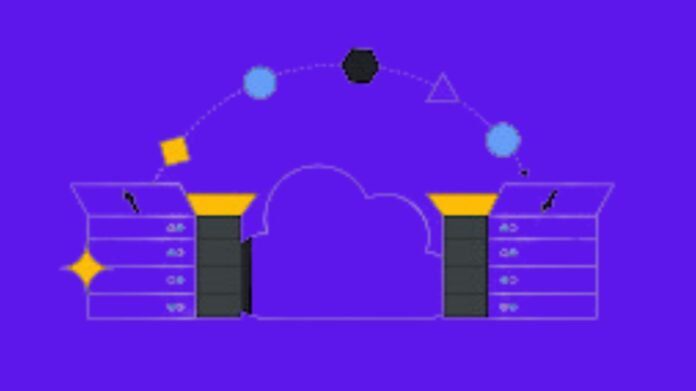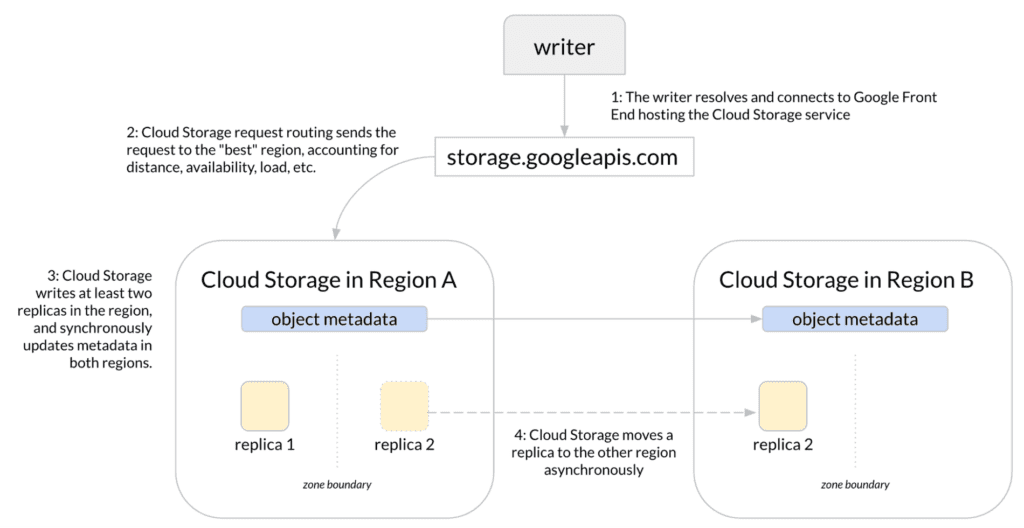Dual-region Storage In Google Cloud Storage
Data performance, availability, and dependability are critical in today’s digital environment. Cloud storage solutions that guarantee data security, minimal latency, and ongoing access are essential to businesses and organizations. With three different bucket location types single, dual, and multi each with advantages and disadvantages of their own, Cloud Storage provides a strong answer to these problems.
This is particularly relevant since Google is constantly adding dual-region pairings for Cloud Storage to assist companies in managing and streamlining European data compliance regulations. Google is pleased to present the following three new dual-region pairings: Belgium/London, Frankfurt/Zurich, and Frankfurt/London. Cloud Storage provides data sovereignty and resilience by facilitating data replication between nearby but physically separate locations. It also assists enterprises in meeting strict regulatory requirements.
Continue reading to learn about dual-region storage, its benefits, and how to use it.
Comprehending dual-region storage
So what is dual-region storage precisely, and how does it operate? When you create a bucket in Cloud Storage, you have to choose where the object data will be stored geographically. Dual-region buckets display as a single bucket (namespace) with strong consistency, but they store redundant data over two physically separated areas inside a single continent (more on that below).
By guaranteeing that data remains accessible from the secondary region without any interruption, even in the event of a disaster or maintenance outage affecting one entire region, this configuration improves data resilience. Customers who wish to divide their workload across the two regions as part of a business continuity/disaster recovery architecture may find this to be particularly appealing.
Active-active redundancy
Two-region active-active redundancy
Cloud Storage dual-regions employ an active-active architecture based on a single geo-redundant bucket, in contrast to typical storage models that use an active-passive strategy, integrating “primary” and “secondary” geographic locations. By removing the need to manually copy data between buckets, manually switch to a backup bucket in the event of a primary region outage, or manually return to the primary bucket once primary region availability is restored, this streamlines the disaster recovery procedure. Cloud Storage dual-region buckets maintain serving all data that has been replicated across regions as needed, with a recovery time objective (RTO) of zero, in the event of a regional outage. Users typically aren’t aware of temporary regional failures.
To fully utilize the active-active storage architecture in your dual-region bucket, it is a good idea to load balance the remaining workload between the two regions. If you use this strategy, in the event of an outage in any region, your workload will continue to function normally and no manual intervention is required.
If an active-active architecture isn’t feasible for any reason, dual-region storage will nevertheless enable you to execute the remainder of your use case across the two regions in a conventional primary-secondary fashion. You will need to fail over your compute and other resources to the secondary region in this scenario, where your dual-region bucket will already be prepared to serve your data, in the event that your first region has an outage.
High degree of consistency
The robust consistency assurances that are offered for single- and multi-region buckets also apply to dual-region buckets. The active-active topology is made feasible by strong consistency, which ensures that you always see the most recent version of your data regardless of where or when it is written to a dual-region bucket. This eliminates the fear that several regional buckets may become out of sync with one another. In data analytics scenarios, for instance, strong consistency is especially crucial to guarantee that all pertinent data is available for analysis and to prevent incomplete or erroneous results.
Asynchronous data replication underpins the geo-redundancy of Cloud Storage dual-region buckets. Newly written objects are first secured as regional objects with redundancy across availability zones within a single region throughout this procedure. The service replicates these things to a second location and makes them geo-redundant objects within a given Recovery Point Objective (RPO) time window. The replication settings of the bucket define how long object replication will take between the two regions.
For 99.9% of newly written items within an hour’s RPO target and 100% of newly written objects with a 12-hour RPO, default replication offers redundancy across regions. Compositions, uploads, rewrites, and copies are examples of newly written things. This kind of replication is the default for multi-regions and dual-regions, as its name would imply.
A premium function called turbo replication offers an industry-best 15-minute RPO. It is guaranteed, regardless of object size, to duplicate 100% of newly written objects to both regions in the dual-region in under 15 minutes under the Cloud Storage Service Level Agreement (SLA). Turbo replication helps maintain uninterrupted service during a regional outage by reducing the risk of data loss and enabling faster redundancy between regions for the data in your dual-region buckets.
Dual-region storage advantages
- Enhanced dependability and availability: Compared to regional storage, dual-region storage offers substantially higher availability. Data is transparently served from the other area in the event of a shutdown or maintenance event in one region.
- Accepts catastrophe recovery topologies that are both active-active and active-passive: Due to the great consistency of dual-region storage, overall workflows are best load balanced over the two regions of a dual-region in an active-active architecture. If you would rather take a different method, dual-regions can handle primary-secondary topologies just as well.
- Management simplicity: There is no need for human intervention because dual-region data replication and any required regional failover and failback are handled automatically. This enhances catastrophe recovery and business continuity by supporting an RTO of zero.
- Improved performance: When workloads access data from the nearest region, they perform better. Additionally, dual-region buckets can provide read bandwidth of terabits per second, which is equivalent to single-region buckets.
- Compliance and data sovereignty: By maintaining data inside predetermined geographic borders while maintaining redundancy and availability, dual-region storage aids businesses in adhering to data sovereignty laws. Dual-region storage, for instance, can be used to meet industry-specific specifications on the physical separation between data copies.
To put it briefly, Google Cloud dual-region storage is an effective means of boosting data availability, resilience, and performance. Businesses can reduce risks, increase reliability, and adhere to regulations by utilizing redundant storage across geographically dispersed regions. Whether you’re handling sensitive data or running mission-critical apps, dual-region storage on Google Cloud provides a strong base for your cloud infrastructure requirements. Take advantage of dual-region storage’s benefits now to increase the dependability of your data.


